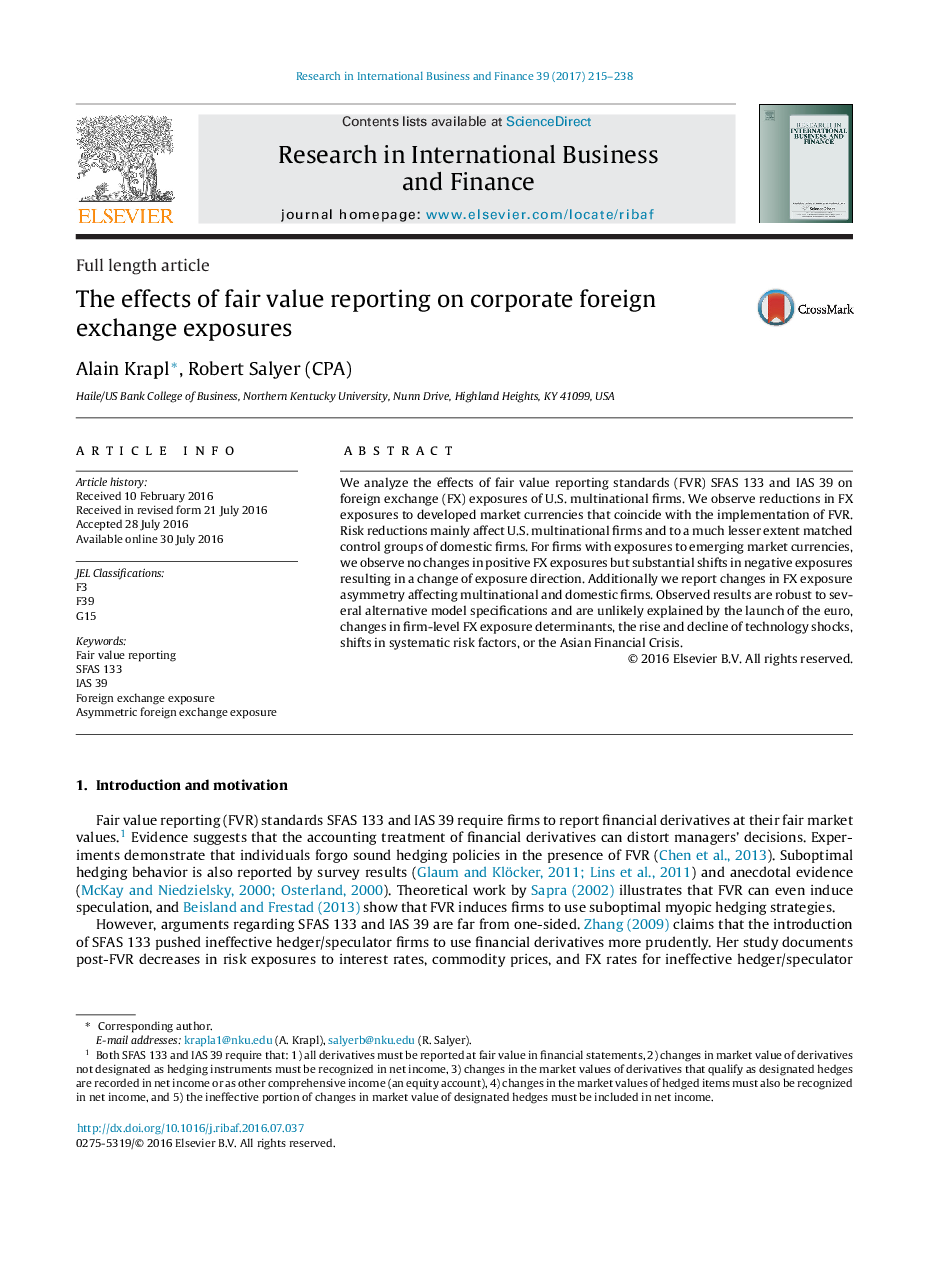| Article ID | Journal | Published Year | Pages | File Type |
|---|---|---|---|---|
| 1002879 | Research in International Business and Finance | 2017 | 24 Pages |
•We analyze the effects of fair value reporting standards (FVR) SFAS 133 and IAS 39.•We study the effects of FVR on corporate foreign exchange (FX) exposures.•We observe reductions in FX exposures to developed market currencies post-FVR.•Risk reductions mainly affect U.S. MNCs not control groups of DCs.•We report changes in FX exposure asymmetry affecting MNCs and DCs.
We analyze the effects of fair value reporting standards (FVR) SFAS 133 and IAS 39 on foreign exchange (FX) exposures of U.S. multinational firms. We observe reductions in FX exposures to developed market currencies that coincide with the implementation of FVR. Risk reductions mainly affect U.S. multinational firms and to a much lesser extent matched control groups of domestic firms. For firms with exposures to emerging market currencies, we observe no changes in positive FX exposures but substantial shifts in negative exposures resulting in a change of exposure direction. Additionally we report changes in FX exposure asymmetry affecting multinational and domestic firms. Observed results are robust to several alternative model specifications and are unlikely explained by the launch of the euro, changes in firm-level FX exposure determinants, the rise and decline of technology shocks, shifts in systematic risk factors, or the Asian Financial Crisis.
